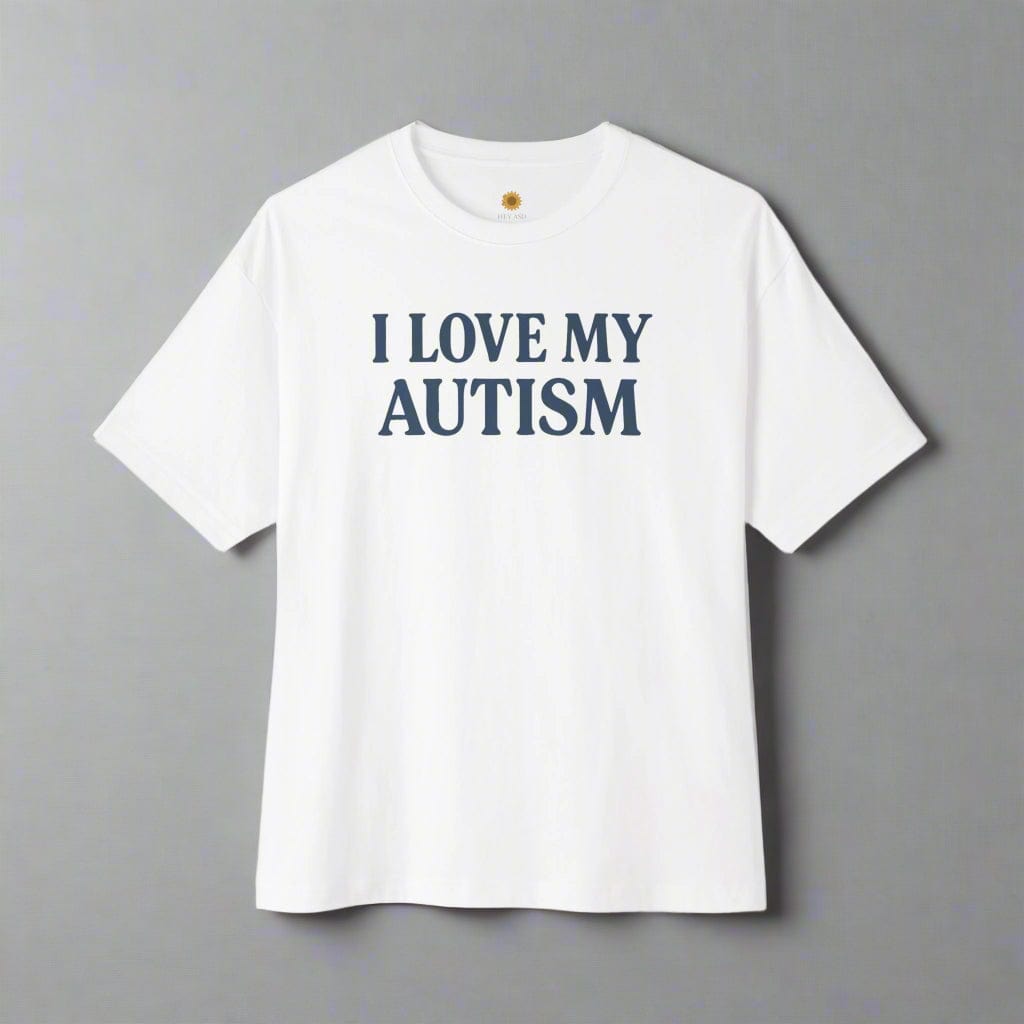ABA Therapy at School: The IEP Process

Written by the HeyASD Editorial Team
Individualized Education Programs (IEPs) play a pivotal role in providing tailored support and accommodations to meet the distinctive needs of students. For students with autism, the implementation of IEPs becomes particularly crucial as they aim to address the specific challenges that may arise throughout their educational journey. In this article, we will delve into the IEP process for students with autism, including collaborative development, addressing specific challenges, setting goals and objectives, and involving the student in their IEP.
Key Takeaways
- IEPs are crucial for supporting students with autism and maximizing their potential for success.
- Involving the student in the IEP process promotes self-advocacy and independence.
- IEPs focus on skill development, behavior, and emotional regulation for students with autism.
- Setting individualized goals and objectives is essential for the success of students with autism.
- Collaborative effort among educators, parents, and professionals is key to effective IEP development.
Understanding the IEP Process
Collaborative Development
The development of an Individualized Education Plan (IEP) is a collaborative effort that brings together parents, educators, and professionals. This partnership is crucial for tailoring education to the unique needs of students with autism, ensuring a supportive and inclusive classroom environment.
- Parents provide insights into their child's strengths and challenges.
- Educators apply their expertise to craft effective learning strategies.
- Professionals offer specialized support and resources.
Collaboration is the cornerstone of a successful IEP, fostering a network that champions the student's educational journey.
By maintaining open lines of communication and building a supportive network, the IEP process becomes a dynamic tool for progress. It allows for ongoing assessment and necessary adjustments, ensuring that every student has the opportunity to thrive.
Importance for Students with Autism
For students with autism, the Individualized Education Program (IEP) is a critical tool that addresses their unique educational needs. It ensures that learning is tailored to their strengths and challenges, providing a framework for success in the classroom. The IEP process recognizes that students on the autism spectrum may experience a diverse range of abilities and needs.
Autism Spectrum Disorder (ASD) manifests differently in each student. Some may excel academically while needing support with social interactions, whereas others might require assistance with sensory sensitivities or executive functioning skills. The IEP process is designed to accommodate these variations, ensuring that each student receives the necessary support to overcome barriers to learning.
The IEP is more than a document; it's a commitment to student-centered education, where every strategy and goal is aligned with the student's best interests.
By incorporating specific strategies such as visual supports, structured environments, and clear communication, the IEP helps students with autism to not only access the curriculum but also to develop essential life skills. Collaboration with parents and professionals is key, as it brings together a wealth of knowledge and resources to support the student's educational journey.
Involving the Student
Involving the student in the IEP process is not just beneficial; it's essential. A person-centered approach ensures that the student's unique strengths and interests shape their educational journey. Here's how to make it happen:
- Person-Centered Approach: Recognize the student's strengths, interests, and preferences to guide the IEP.
- Student-Led Meetings: Empower students to share their thoughts and concerns in IEP meetings.
- Visual Supports: Use tools like visual schedules to facilitate participation.
By actively involving students, we validate their experiences and encourage self-advocacy. This not only fosters independence but also ensures that the educational strategies align with their personal needs and goals.
Self-monitoring techniques can further enhance this involvement, allowing students to track their own progress. When students with autism are included in the planning and execution of their IEP, the outcomes are more meaningful and impactful.
Addressing Specific Challenges
Skill Development
Developing academic skills is a cornerstone of the IEP process for students with Autism Spectrum Disorder (ASD). Math concepts and problem-solving abilities are not just academic exercises; they are essential tools for navigating both school and everyday life. IEP goals may range from mastering basic operations to advancing in complex mathematical reasoning.
- Mathematical Operations: Goals to improve addition, subtraction, multiplication, and division.
- Numerical Fluency: Enhancing fluency with basic number facts and mental math.
- Problem-Solving: Fostering the ability to tackle problems with strategic thinking.
Ensuring that each student with ASD can apply these skills in real-world scenarios is as important as the learning process itself. Tailoring these goals to individual needs helps bridge the gap between potential and performance.
Behavior and Emotional Regulation
For students with autism, mastering behavior and emotional regulation is a cornerstone of their success in the classroom. Effective IEP goals are designed to address these challenges head-on, fostering an environment where students can learn and grow.
- Minimize disruptive behaviors: Establishing clear expectations and consistent consequences to reduce interruptions.
- Promote emotional regulation: Teaching students to recognize and manage their emotions through structured activities.
- Enhance self-control: Implementing strategies that encourage students to think before they act.
By honing these skills, students are better equipped to handle the social complexities of school life, leading to improved academic performance and peer relationships.
Regular progress monitoring ensures that strategies remain aligned with the student's evolving needs. The collaborative nature of the IEP process means that educators, therapists, and parents work together to support the student's journey towards emotional maturity and behavioral stability.
Assistive Technologies
In the realm of special education, assistive technologies are a game-changer. They empower students with autism to navigate academic challenges and engage more fully in the learning process. From high-tech devices like text-to-speech software and communication apps to simple tools such as visual schedules and pencil grips, the range of assistive technologies is vast and varied.
Each student's needs are unique, and so should be the assistive tools they use. A carefully selected array of technologies can support verbal and non-verbal communication, enhance organization, and facilitate task completion. For instance, noise-canceling headphones or weighted vests can be crucial for sensory regulation, creating a more conducive learning environment.
The integration of assistive technologies within the IEP process is not just about inclusion; it's about equipping students with the means to achieve their full potential.
It's essential to assess and match the assistive technology to the student's individual strengths and challenges. This strategic approach ensures that every child has access to the resources they need to thrive in school and beyond.
Setting Goals and Objectives
Individualized Approach
When it comes to ABA therapy within the school setting, an Individualized Approach is paramount. Each student's IEP must be as unique as their fingerprint, reflecting their distinct abilities, challenges, and aspirations. This bespoke blueprint is not just about setting goals, but about carving a path that aligns with the student's personal journey through education and development.
The IEP is not a one-size-fits-all document; it's a living, evolving plan that adapts to the student's growth and changing needs.
To ensure the IEP is truly individualized, a detailed assessment is conducted. This assessment forms the bedrock of the IEP, outlining the student's strengths and areas for intervention. Here's a snapshot of what this might include:
- Assessment of strengths: What are the student's natural talents and abilities?
- Identification of challenges: Where does the student need the most support?
- Goal setting: What are the short-term and long-term objectives?
- Strategy development: Which techniques will be employed to reach these goals?
- Progress monitoring: How will achievements be measured and celebrated?
By tailoring the IEP to the student's unique profile, we ensure that the skills acquired in therapy are transferable to everyday life, fostering a sense of achievement and autonomy.
Accountability and Monitoring
Ensuring that each student's Individualized Education Program (IEP) is not just a document, but a dynamic plan of action, accountability and monitoring are crucial. Regular assessments provide the data needed to gauge progress and guide adjustments.
- Progress Tracking: Regularly scheduled evaluations measure advancements in key areas.
- Data Analysis: Insightful review of performance data to inform teaching strategies.
- Adjustment: Timely modifications to the IEP based on student needs.
By consistently monitoring progress and holding all parties accountable, the IEP remains a living document, responsive to the student's evolving educational journey.
Collaboration is key, with educators and parents jointly reviewing progress to ensure the student is on track. This shared responsibility fosters a supportive environment where students with autism can thrive.
Collaborative Effort
The collaborative effort in the IEP process is the linchpin to a student's success. Parents, educators, and professionals unite, bringing together a wealth of knowledge and experience to tailor an educational plan that fits the student like a glove. This synergy is not just beneficial; it's essential.
- Parents provide insights into their child's unique strengths and needs.
- Educators contribute their understanding of pedagogical strategies.
- Professionals offer specialized expertise in areas like speech therapy or occupational therapy.
By pooling these resources, the IEP team crafts a roadmap that is both ambitious and achievable, ensuring that every student has the opportunity to reach their full potential.
Regular communication and review meetings are a must to keep the IEP relevant and effective. Adjustments are made as needed, always with the student's best interests at heart. The goal is a dynamic IEP that evolves with the student, providing a consistent framework for growth and learning.
Conclusion
In conclusion, the IEP process is a crucial component in providing individualized support and accommodations for students with autism. It ensures that students receive the necessary educational services and interventions to maximize their potential for success. Involving students in the IEP process is essential for promoting self-advocacy and fostering independence. By understanding the importance of IEPs, actively involving students, and setting appropriate goals and objectives, we can create a supportive and inclusive educational environment that enables all students to thrive academically and socially.
Join Hundreds of Autistic Adults Feeling
More Comfort in Their Own Skin
Use code WELCOME10 for 10% off your first order.
Start Your Comfort JourneyFrequently Asked Questions
What is an IEP and why is it important for students with autism?
An Individualized Education Program (IEP) is a personalized plan designed to provide individualized support, accommodations, and specialized instruction to address the specific needs of students with autism. It is important because it ensures that the student receives the appropriate educational services and interventions required for their success.
How is the student involved in the IEP process?
Involving the student with autism in the IEP process and with their IEP is crucial for promoting self-advocacy, fostering independence, and empowering them to take an active role in their education. Strategies to involve the student include a person-centered approach and recognizing the student's ability to learn.
Who is involved in the collaborative development of an IEP?
The collaborative development of an IEP involves teachers, parents, special education professionals, and other relevant members of the educational team. It sets forth the educational objectives, specialized instruction, and related services necessary to help the student succeed academically, socially, and emotionally.
What specific challenges does an IEP address for students with autism?
IEPs focus on addressing the specific challenges and deficits commonly associated with autism, such as skill development, behavior and emotional regulation, and assistive technologies. They identify areas where targeted interventions and supports can be implemented to foster growth and development.
How are goals and objectives set in an IEP?
Goals and objectives in an IEP are set through an individualized approach, accountability and monitoring, and a collaborative effort. They are tailored to meet the unique needs of each student with autism, setting them on a path towards academic success.
Why do students with autism have IEPs?
Students with autism often experience difficulties in communication, social interaction, and behavior, which can significantly impact their ability to learn in a traditional classroom setting. An IEP is designed to provide individualized support and accommodations to address these specific needs.
How is behavior and emotional regulation addressed in an IEP?
When developing Individualized Education Programs (IEPs) for students with autism, addressing behavior and emotional regulation is of paramount importance. This section focuses on managing challenging behaviors and fostering emotional regulation to support the student's overall development.
What role do assistive technologies play in an IEP for students with autism?
Assistive technologies are integrated into an IEP to provide additional support, accommodations, or visual aids to enhance organization and task completion. These technologies aim to enhance the student's independence, engagement, and overall academic success within the educational setting.
On This Page
Frequently asked questions
What are the key steps in the IEP process for students with autism?
How can parents and educators work together effectively during the IEP development?
In what ways can students with autism be involved in their own IEP meetings?
How does ABA therapy support goals within an individualized education program?
What types of sensory-friendly tools or calming items can help students during school and therapy sessions?
How are behavior and emotional regulation goals incorporated into an IEP for a student with autism?
What role do assistive technologies play in supporting sensory-friendly education for students with autism?
How is progress monitored and adjustments made to ensure the IEP remains effective over time?
Are there autism-themed products like t-shirts or decor that can help create a supportive and affirming environment at school or home?

About the HeyASD Editorial Team
Autistic‑owned • Values‑led • Sensory‑friendly design
We are autistic creators, writers, and advocates dedicated to producing resources that are practical, sensory-aware, and grounded in lived experience. Our mission is to make information and products that support the autistic community accessible to everyone, without jargon or condescension. Learn more about our team.
This article is written from lived autistic experience and an evidence-aware perspective. It is for general informational purposes only and should not be taken as medical, legal or therapeutic advice.
Always consult a qualified clinician or occupational therapist for individual needs and circumstances.

About Our Autism Blog
HeyASD isn’t just a store, it’s a calm, supportive space created by and for autistic adults. Our blog shares sensory-friendly tips, identity-affirming stories, and heartfelt resources for navigating life as an autistic person. Whether you're late-diagnosed, exploring your needs, or supporting someone you love, you're welcome here.
Thank you for reading. We hope these resources bring comfort and clarity.




































